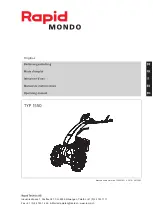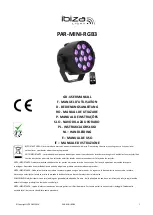
10
1. Use acc. to EN 795 B and
CEN / TS 16415 / B: 2013:
�
This anchor device was tested to EN 795,
Class B, CEN/TS 16415/B:2013 and is suited for
use by no more than 2 persons.
�
When using it in a fall arrest system, it is ne-
cessary to ensure compliance with the permitted
maximum fall arrest force (6 kN) by the fall arrest
system. These lanyards are also suited for use in
rope access systems.
�
According to EN 795:2012, the anchor device
(anchor point) for personal protective equipment
must withstand a force of at least 12 kN.
�
The anchor point should always be located
vertically above the user.
�
Verify that the structure to which you attach the
sling is suitable for the intended purpose (e.g.,
static load bearing capacity, location, sharp
edges, ...).
�
The length of the anchor device must always be
adjusted to the object it is looped around.
�
The Manufacturer’s Information (Instructions for
Use) of all other components used in a personal
fall protection system must be complied with
(e.g., the required clearance underneath the user, ...)
�
The anchor device should be marked with the
date of the next or the most recent inspection.
The anchor device can be used as follows:
a) Webbing sling 30 kN / Webbing sling 35 kN
CHOKE HITCH (COW HITCH)
CAUTION!
Residual breaking
force approx. 30%
DOUBLE SLING
Static breaking load of the webbing sling (sin-
gle sling, stretched, without cow hitch):
30 kN / 35 kN dependent on design
The breaking forces were determined in individual
tests in the as-new state of the product and under
laboratory conditions. They merely represent rough
reference values which, in practical use, may differ
due to various factors (e.g., material, shape, diam-
eter, and structure of the object the sling is looped
around, position of the webbing sling, age, mois-
ture, ...).
The stitching of the webbing sling should be located
in its free length (not at bends around edges or at
the lanyard).
b) Webbing lanyard K / Y-type webbing lanyard K
The end of the lanyard with the sewn-in ring is
placed around a suitable structure, and subsequent-
ly all loose ends are threaded through this ring.
USE
Pic. 5
Pic. 6
Pic. 7
Pic. 8
Pic 9











































